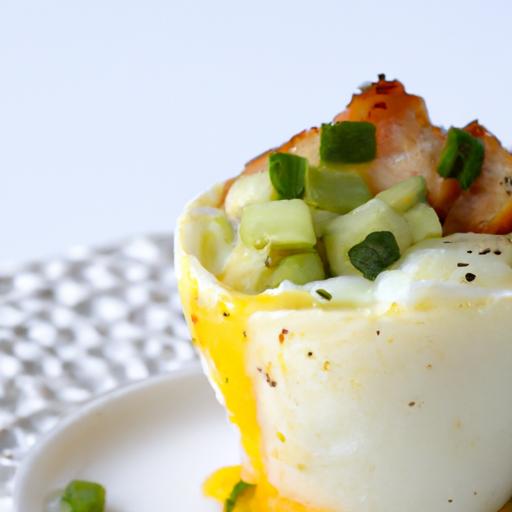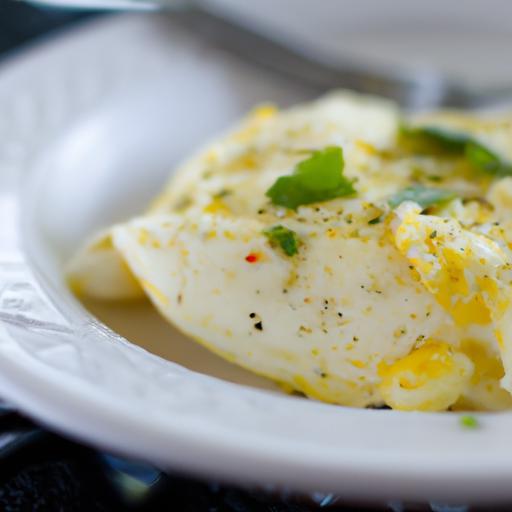There’s something magical about cracking open a perfectly cooked egg during meal prep-a protein-packed, versatile nutrient boost that promises convenience and flavor. But all too often, that promise falls flat when the eggs turn rubbery, dry, or downright unappetizing by midweek. If you’ve ever stared at a container of meal-prep eggs wondering where the silky texture went, you’re not alone. Fear not: with a few insider tips and tricks, you can keep your meal-prep eggs fresh, tender, and downright delicious, every single time. Say goodbye to rubbery textures and hello to eggs that taste like they were made that morning-even days later. Let’s dive into the science and secrets behind egg freshness that will transform your meal prep game forever.
Keep meal prep eggs fresh by mastering the art of cooking them to perfection-soft, tender, and never rubbery. This transformation begins with understanding why eggs turn tough when prepared ahead, a common hurdle in busy kitchens. The secret lies in gentle heat, precise timing, and storing methods that lock in moisture while preserving delicate textures. Whether you’re batch-cooking breakfast for the week or crafting flavorful bento boxes, these insights will elevate your meal prep game and help you savor every bite with the bright, creamy texture you crave.
Prep and Cook Time
- Preparation: 10 minutes
- Cooking: 15 minutes
- Total: 25 minutes
Yield
Serves 4
Difficulty Level
Easy
Ingredients
- 8 large eggs, preferably organic or free-range
- 1/4 cup whole milk or cream, for buttery richness
- 2 tablespoons unsalted butter
- Salt and freshly ground black pepper, to taste
- Fresh herbs (optional, such as chives, parsley, or tarragon), finely chopped
- 1 teaspoon olive oil, for added moisture during reheating
Instructions
- Prepare your eggs: Crack the eggs into a mixing bowl and add the whole milk or cream. Whisk gently until fully combined, ensuring the mixture is smooth and consistent-this infusion prevents rubberiness by adding moisture inside the curds.
- Heat your pan: Use a non-stick skillet over medium-low heat. Add the butter and allow it to melt gently, swirling to coat the surface evenly without browning.
- Cook slowly: Pour the egg mixture into the skillet. Let it sit, undisturbed, for about 20 seconds, then begin to gently stir with a heatproof spatula, moving in slow circles from the edges inward.
- Create creamy curds: Continue stirring slowly and intermittently, scraping the bottom and sides. Remove the pan from heat just before the eggs look fully set-this residual heat ensures they finish cooking softly without drying out.
- Season and cool: Immediately season with salt and pepper, fold in fresh herbs if using, and spread the eggs in a thin layer in a shallow container to cool quickly.
- Proper storage: Cover the container tightly with plastic wrap or a snap-on lid and refrigerate promptly. When reheating, add a teaspoon of olive oil to a skillet over low heat, gently warming the eggs to restore their tender, moist texture without overcooking.
Tips for Success
- Low and slow: Cooking eggs on medium-low heat prevents rapid protein coagulation, which causes rubbery textures.
- Milk magic: Adding milk or cream hydrates the curds and enriches flavor, keeping eggs tender even after chilling.
- Immediate cooling: Rapidly cooling eggs and storing them properly is crucial to lock in moisture and stop residual cooking.
- Reheat with care: Avoid microwaving on high heat; instead, reheat in a pan with oil or butter on low to preserve silkiness.
- Variations: For an Italian twist, fold in sun-dried tomatoes and basil before cooking. Or add cooked mushrooms and fresh thyme for earthy depth.
- Make-ahead: Eggs last up to 4 days refrigerated when stored properly-perfect for busy weekdays.
Serving Suggestions
Present your silk-soft eggs atop toasted sourdough for a rustic morning treat, or nestle them alongside crispy bacon and fresh avocado slices for a vibrant brunch plate. Garnish with a shower of finely chopped chives, a dusting of smoked paprika, or a drizzle of truffle oil for decadent flair. These eggs also shine as a protein-packed filling in wraps or a dollop on warm grain bowls, adding creamy contrast to roasted vegetables and bright pickles.
| Nutrient | Per Serving |
|---|---|
| Calories | 180 kcal |
| Protein | 12 g |
| Carbohydrates | 1 g |
| Fat | 14 g |

For further guidance on meal prepping protein-packed breakfasts, explore our detailed guide on meal prep protein recipes. To learn more about egg science and culinary techniques, visit Serious Eats’ Ultimate Guide to Eggs, a trusted resource for food enthusiasts worldwide.
Q&A
Q&A: Keep Meal Prep Eggs Fresh – Say Goodbye to Rubbery Texture
Q1: Why do meal prep eggs often turn rubbery?
A: When eggs are reheated improperly or stored too long, the proteins tighten up, squeezing out moisture and causing that dreaded rubbery texture. Overcooking initially or heating at too high a temperature speeds up this process, leaving you with dry, tough eggs instead of fluffy, tender ones.
Q2: How can I prevent eggs from becoming rubbery in meal prep?
A: The secret is gentle cooking and smart storage. Cook eggs just until set, avoiding overcooking. When storing, cool them quickly, keep them airtight, and store in the fridge. Reheat eggs gently at low power or with a splash of water or milk to restore moisture without overcooking.
Q3: What cooking methods work best for meal prep eggs to maintain freshness?
A: Soft scrambling, gentle steaming, or baking in a water bath help retain moisture and tenderness. Avoid high heat or frying eggs for meal prep unless you plan to consume immediately. These methods keep eggs fluffy and less prone to toughness after reheating.
Q4: How long can meal prep eggs stay fresh in the fridge?
A: For optimal texture and safety, consume meal prep eggs within 3 to 4 days. Beyond that, freshness declines, moisture evaporates, and texture worsens, increasing the risk of rubbery eggs.
Q5: Are there any nifty hacks to revive rubbery reheated eggs?
A: Absolutely! Adding a little fat-like butter, olive oil, or a splash of cream-during reheating can improve texture. Cover eggs while reheating to trap steam, which softens them up. Mixing in fresh herbs or cheese can also add moisture and flavor, masking slight dryness.
Q6: Can freezing help keep meal prep eggs fresh?
A: Yes, but with caution. Scrambled eggs freeze better than whole or fried eggs. Freeze them in airtight containers, thaw overnight in the fridge, and reheat gently. Freezing can slightly alter texture, so it’s best for eggs meant for mixing into dishes rather than eating plain.
Q7: What’s the bottom line for keeping meal prep eggs fresh and fluffy?
A: Cook gently, store airtight and chilled, and reheat with care. Treat your eggs with a little love, and they’ll stay tender and delicious, making meal prep breakfasts genuinely enjoyable, not rubbery regrets!
Closing Remarks
In the quest for perfect meal prep eggs, freshness is your ultimate ally-and saying goodbye to that dreaded rubbery texture is easier than you think. By mastering a few simple techniques, you can unlock the full potential of your eggs: tender, flavorful, and just as satisfying on day three as on day one. Keep these tips close in your kitchen arsenal, and your meal prep will never lose its charm. Fresh eggs, happy taste buds, and a week of effortless, delicious meals-now that’s a recipe worth cracking!








